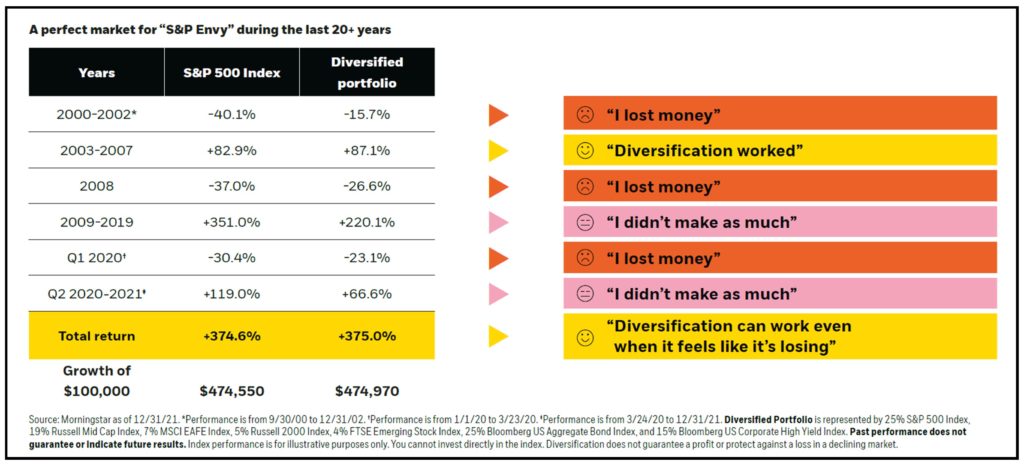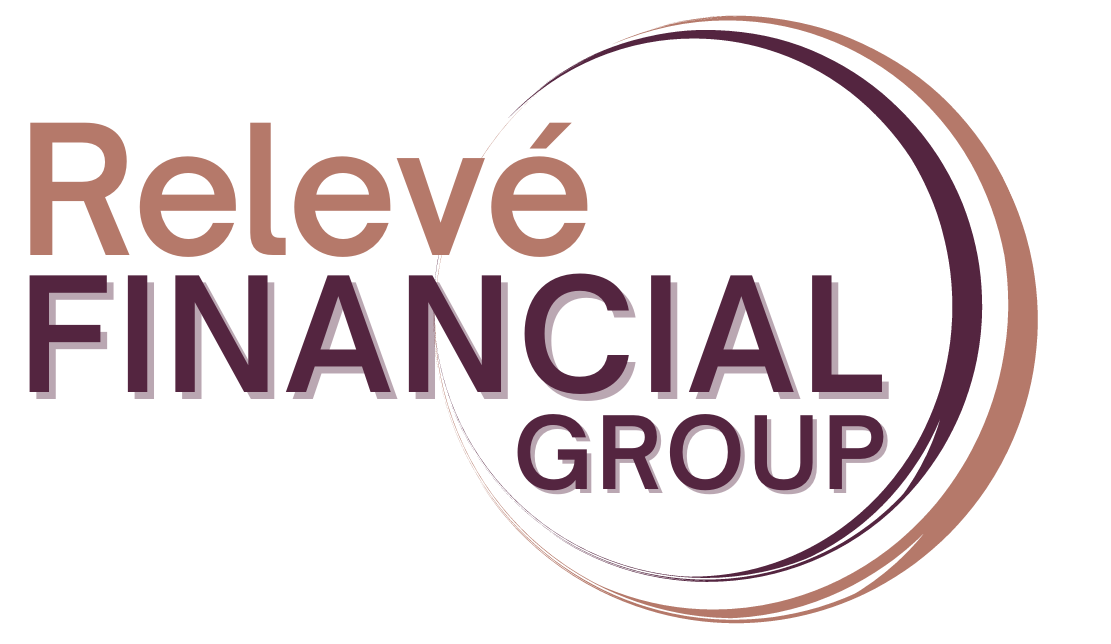There is a reason financial advisors talk with clients over and over again about diversification while developing financial plans. It’s simply the key to intelligent investing.
A well-diversified portfolio can help smooth returns and reduce volatility over the long haul, but this strategy takes patience and may feel disappointing if you are not referencing the proper benchmarks to judge your performance over shorter time periods.
Comparing the index to your own portfolio can be a slippery slope.
Most investors are familiar with the S&P 500. Whenever we turn on the TV or go online to check the markets, this index serves as the most common barometer of the market as a whole. Since this benchmark is composed of the largest, most influential companies in the US, it only paints a small piece of the picture for a portfolio that is diversified across the asset class spectrum. Bonds, real estate, small-cap stocks, and foreign firms show no representation in the S&P 500 just to name a few. This can lead to a phenomenon called “S&P envy” when investors compare the index to their own portfolio to judge their performance, which is rarely an apples-to-apples assessment.
This visual from BlackRock does a great job of illustrating the emotional toll that this can take, especially amid the market climate we have seen over the last 20 years domestically.
Download Complete PDF here.
The chart on the left shows the performance of the S&P 500 over various time frames since 2000, and compares that to a diversified portfolio composed of 60% equities and 40% bonds. As you can see, it would have been easy for this hypothetical investor to get discouraged when the S&P 500 outperformed their diversified portfolio by a wide margin in periods like 2009-2019 or 2020-2021. They may have started to think “this strategy is not working” or “I need to get more aggressive or I will start to fall behind”.
On the flip side, succumbing to greed and abandoning the diversified portfolio at the end of these high growth periods may not have worked out so well for this investor. The diversified portfolio held up much better and showed relative “outperformance” during drawdowns in 2000-2002, 2008, and early 2020. Even if they held their diversified portfolio during these turbulent times, their portfolio was still well off its highs – and they were probably not celebrating by any means.

Our natural tendency is to have a stronger emotional reaction to negative outcomes vs. positive ones.
Most investors wouldn’t be thrilled if their portfolio was only down -26.6% in 2008 while the S&P had cratered nearly -40%. They would probably just feel frustrated that their nest egg had shrunk, and may have been fighting off stressful thoughts like “can I still retire?” or “do I need to start cutting my spending?”. Have you ever felt that way?
The benefits of staying the course:
The last row of the graphic above shows the potential benefit of diversification for long term investors. Despite all of the patience it took this investor to stick to their strategy for 20 years, and all of the emotional struggles they may have faced comparing their returns to the S&P 500 across bull markets and drawdowns – their portfolio’s total return surpassed that of the index, with less volatility during market contractions.
“S&P envy” is a lose-lose mindset.
- Leads to frustration in good times – “I have positive returns, but why are they not higher?”
- Leads to frustration during rocky ones – “Who cares that I am down less than the S&P 500? I still lost money!”
The benefits of working with an advisor:
Many think successful investing requires a PHD in economics or spending tens of thousands of dollars on sophisticated charting and analysis software. There is undoubtedly some merit in those things, but they pale in comparison to the value of patience and conviction in a well thought out plan. Think of the knowledge base as having only one piece to the success puzzle.
We all want to earn the highest returns while taking the least amount of risk, which unfortunately isn’t realistic. The magic is in managing the risk.
Our unique behavioral focused approach:
We understand our emotions and our relationship with money are important considerations as we help our clients build their wealth management plans for their specific goals, investing and retirement. We guide them through the emotional struggles that come with money, and give them the encouragement they need to build a plan and stick to it – regardless of any market related noise in the background.

Jake Fromm | Chief Investment Officer, CFS® | It is our mission to help you think differently about your wealth so you can LIVE WELLthy™ today and tomorrow.
